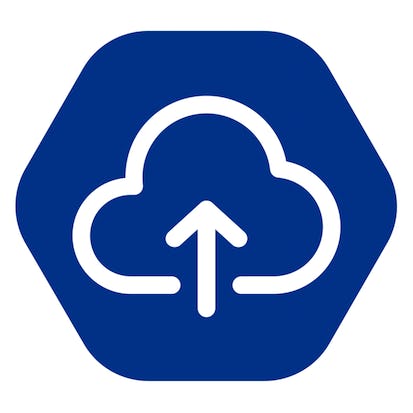- Level Professional
- Duration 13 hours
- Course by LearnQuest
-
Offered by

About
This Azure training course is designed to equip students with the knowledge need to process, store and analyze data for making informed business decisions. Through this Azure course, the student will understand what big data is along with the importance of big data analytics, which will improve the students mathematical and programming skills. Students will learn the most effective method of using essential analytical tools such as Python, R, and Apache Spark.Modules
Course Introduction
1
Videos
- Course Introduction
1.1 Introduction
1
Videos
- 1.1 Batch Processing with Databricks and Data Factory in Azure
1.2 ELT Processing using Azure
1
Videos
- 1.2 - ELT Processing using Azure
1.3 Databricks and Azure Spark
1
Videos
- 1.3 - Databricks and Azure Spark
1
Readings
- Azure Databricks and Apache Spark
1.4 Transform Data using Databricks in Azure Data Factory
1
Videos
- 1.4 Transform Data using Databricks in ADF
1.5 Use Case: Azure Data Factory and Spark
1
Videos
- 1.5 Use Case: ADF and Spark
Labs & Exercises
2
Readings
- Exercise 1 - Use Batch Processing with Databricks and Data Factory on Azure
- Exercise 2 - Intro to Databricks and Data Factory Page
Module Assessment
1
Assignment
- Module 1 Quiz
2.1 Introduction
1
Videos
- Pipelines and Activities - Introduction
2.2 Processing using Pipelines and Activities with Azure Data Factory
1
Videos
- Processing using a Pipeline
2.3 Analyzing Logs for an HDInsight Cluster
1
Videos
- Analyzing Logs for an HDInsight Cluster
2.4 Using Azure Blob Storage within HDInsight
1
Videos
- Using Azure Blob Storage within HDInsight
1
Readings
- Using Azure Blob Storage with HDInsight
Labs & Exercises
2
Readings
- Exercise 1 - Pipeline Activities & Usage in Azure Data Factory
- Exercise 2 - Examine Logs within the HDInsight/Blob Storage
Module Assessment
1
Assignment
- Module 2 Quiz
3.1 Introduction
1
Videos
- Link Services and Datasets - Introduction
3.2 Identifying pipelines for a Data Factory
1
Videos
- Identifying Pipelines for a Data Factory
3.3 Data stores and Azure Blob Datasets, Containers, and Folders
1
Videos
- Data Stores and Azure Blob Storage
3.4 Linked Service and Connecting Data Factory to External Resources
1
Videos
- Linked Service and Connecting Data Factory to External Resources
3.5 Processing Input Blobs with Azure Data Factory
1
Videos
- Processing Input Blobs with Azure Data Factory
Labs & Exercises
1
Readings
- Exercise 1 - Link Data within Datasets in Azure Storage
Module Assessment
1
Assignment
- Module 3 Quiz
4.1 Introduction
1
Videos
- Schedules and Triggers - Introduction
4.2 Creating a Trigger that Runs A Pipeline on a Schedule
1
Videos
- Creating a Trigger that Runs a Pipeline on a Schedule
4.3 Scheduling a Trigger in Azure Data Factory
1
Videos
- Scheduling a Trigger in Azure Data Factory
4.4 Pipeline Execution and Triggers in Azure Data Factory
1
Videos
- Pipeline Execution and Triggers in ADF
1
Readings
- Pipeline Execution and Triggers in ADF
4.5 Use Case: Azure Schedule/Trigger/Events
1
Videos
- Use Case: Azure Schedule, Trigger, and Events
Labs & Exercises
Module Assessment
1
Assignment
- Module 4 Quiz
5.1 Introduction
1
Videos
- Selecting Windowing Functions - Introduction
5.2 How Stream Analytics Support Native Windowing Functions to Enable Developers to Author Complex Stream Processing Jobs
1
Videos
- How Stream Analytics Support Native Windowing Functions
5.3 Four Kinds of Temporal Windows
1
Videos
- Temporal Windows
1
Readings
- Understanding Stream Analytics Windowing Functions
5.4 Using Window Functions in the GROUP BY Clause of the Query Syntax in Your Stream Analytics Job
1
Videos
- Using Window Functions in the GROUP BY Clause
5.5 Aggregating Events over Multiple Windows using WindowsQ
1
Videos
- Aggregating Events over Multiple Windows using WindowsQ
Labs & Exercises
Module Assessment
1
Assignment
- Module 5 Quiz
6.1 Introduction
1
Videos
- How Stream Analytics Relate to Data Solutions
6.2 Generating Sample Phone Call Data and Sending it to Azure Event Hubs
1
Videos
- Generate Sample Call Data and Send it to Event Hubs
6.3 Creating a Stream Analytics Job
1
Videos
- Creating a Stream Analytics Job
6.4 Configuring Job Input and Output
1
Videos
- Configuring Job Input and Output
6.5 Defining a Query to Filter Fraudulent Calls
1
Videos
- Define a Query to Filter Fraudulent Calls
6.6 Testing and Starting the Job
1
Videos
- Test and Start the Job
6.7 Visualizing Results in Power BI
1
Videos
- Visualize Results in Power BI
1
Readings
- Output Real-Time Stream Analytics Data to a Power BI Dashboard
Module Assessment
1
Assignment
- Module 6 Quiz
7.1 Introduction
1
Videos
- ELT vs ETL in PolyBase - Introduction
7.2 How SQL Data Warehouse in Microsoft Offers Extract Load Transform Solutions
1
Videos
- How SQL Data Warehouse in Microsoft Offers ELT Solutions
1
Readings
- Video: Ingesting Data using Polybase | Azure SQL Data Warehouse
7.3 SQL Data Warehouse Loading Methods using non-Polybase Options
1
Videos
- Loading Methods using Non-PolyBase Options
7.4 Use Case: A Deeper Dive into ETL Processing using Polybase and ELT Solutions using Microsoft Datawarehouse ELT Approach
1
Videos
- Use Case: A Deeper Dive into ETL Processing
Labs & Exercises
Module Assessment
1
Assignment
- Module 7 Quiz
Auto Summary
Discover the essentials of data processing with Azure in this comprehensive IT & Computer Science course by Coursera. Designed for professionals, it covers big data, analytics, and key tools like Python, R, and Apache Spark. Enhance your skills in 780 hours with Starter and Professional subscription options. Ideal for those aiming to make data-driven business decisions.

Samant Bali

Kenny Mobley


